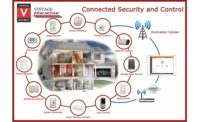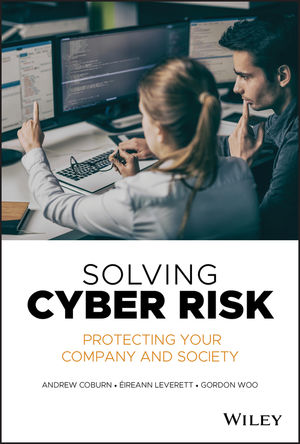Every year, more companies throw out their logbooks and upgrade their visitor management systems. While offices may have been closed for most of 2020 and even 2021, businesses are finally preparing to welcome employees back, and tracking who enters and exits the building has become more important than ever.
“Visitor management has quickly evolved from simply being a convenient, nice-to-have add-on module to replace pen and paper logbooks, to being a must-have component that plays an integral role in protecting the health and safety of employees,” says Jeff Ross, director of global marketing at Feenics, Ottawa, Ontario.
Security integrator Michael Ruddo, chief strategy officer at Integrated Security Technologies Inc., Herndon, Va., says that a large reason for this is the additional tasks visitor management systems can now perform, increasing the ROI for end users.
“Before the pandemic, visitor management focused on securing facilities against unauthorized guests while maximizing ease of use for authorized visitors,” Ruddo says. “In a post-pandemic landscape, visitor management still emphasizes these foundational responsibilities, but it’s also a data collection initiative. For example, building managers need to know who is in their facilities to account for contact tracing efforts, social distancing guidelines and virus mitigation. At the same time, building managers are working to reduce touchpoints to stem the spread of infection.”
The increased convenience of visitor management systems has also aided in their popularity, says Evan Tree, CEO of Prodatakey, Salt Lake City. “The convergence of commercial access control and visitor management systems has accelerated, largely due to the growing use of mobile-first, cloud-based platforms. Administrators are finding overall business access management is now simple and convenient, and can envision visitor management being the same. Couple this with open API access to provide a convenient, unified database and flow of real-time information, and you can understand the enthusiasm of business administrators.”
Visitor Management in the New Normal
After sitting vacant for a year and a half, most workplaces have changed since employees last left them.
“We have moved to a more hybrid workforce, which is not permanently office-based, and requires a new generation of visitor management solutions that are able to handle multiple different types of visitors on a site,” says HID Global’s Julian Lovelock. “This includes contractors and employees as well as customers, suppliers and partners. We’ve seen an increased need to be able to gather or validate specific information depending on the type of visitor, and the ability to adjust workflows over time to meet the evolving environment.”
For many buildings, the specific information they want from visitors is regarding their health.
“COVID-19 forced everyone to re-evaluate how they think about visitors,” says Greg McDermott, AMAG Technology. “It has become more commonplace for visitors to answer health screening questions, have their temperature checked, verify mask compliance, as well as factoring in the occupancy limitations as part of the registration and check-in procedure. Because the laws vary from state to state and are continually changing, a flexible system is needed.”
This is not only for security, but for liability as well, says James Segil of Openpath.
“[Visitor management] has become more important than ever,” Segil says. “It has become a must-have versus a nice-to-have because you need to track every human that enters the space because of the pandemic. Being able to have visitors fill out a health questionnaire is necessary for security and safety, and for liability. Being able to track that person and know they left so you can understand occupancy is important.”
To further prevent the spread of disease, end users are also searching for frictionless options, says Feenics’ Jeff Ross. “We’ve seen a spike in demand for mobile and touch-free visitor solutions. Consumers are looking for minimal contact solutions for everything from self-enrollment to check-in and check-out procedures.”
Automated visitor management solutions are especially beneficial as many businesses struggle to hire receptionists and security guards.
“A pre-pandemic trend that has been exacerbated is a worker shortage for security guard positions,” says Bobby Varma of Princeton Identity. “Hiring challenges have increased interest in automated solutions that require less involvement by human officers for processing visitors and issuing temporary credentials.”
And if you think all of this is unnecessary a year and a half into the pandemic, Lovelock suggests you think again.
“As organizations begin to resume normal pre-pandemic operations, they will still need to be vigilant,” Lovelock says. “There still may be outbreaks, and if there are, visitor management systems provide access to information and analytics about everyone’s activity on the premises. These systems can generate a timeline of who was in the workplace, where they were and when they were there. They also automate and enforce continuously evolving compliance with visitor access and policy-based registration, ensuring the same safety and security steps are consistently followed by everyone, across all offices at any time.”
Opportunities in Visitor Management
With increased interest from end users comes increased opportunities for security integrators and dealers.
“The market for visitor management is expanding to businesses that, in the past, would never have considered investing in a technology-driven solution,” Tree says. “Model homes, houses of worship, daycares or any multitude of businesses that have traditionally relied on low-tech name badges and visitor logs are now embracing the advantages of today’s easy-to-use and affordable cloud-based solutions. This provides an opportunity for integrators to incorporate visitor management into every electronic access control sales presentation.”
Ross says that almost every conversation his team has with organizations includes visitor management.
“There is a tremendous opportunity right now in the visitor management space,” he says. “Demand feels as if it is at an all-time high as more organizations recognize the role that visitor management can play in providing a complete security solution. … When you also consider the current environment and post-pandemic challenges, there is a terrific opportunity for integrators to assume a thought leadership role for their customers, helping them to determine what role visitor management should play in their security strategy. In this Yoda-esque role, integrators have the ability to guide their customers through their journey in evaluating the many options on the market today.”
Beyond that, Ross says there are additional opportunities that exist in helping customers sort through new emerging technologies in visitor management.
However, when discussing the possibility of emerging technologies, be sure to consider both today and tomorrow’s use cases.
“I would advise integrators to encourage their clients to consider today’s challenges and tomorrow’s opportunities when making purchasing decisions,” Ruddo says. “For example, touchless entry systems and face-matching technologies can help building managers respond to the real-time challenges posed by the pandemic. However, these technologies have long-term benefits as well. Touchless technologies are the future of facilities management, empowering employees and employers with a secure and convenient management solution. … Ultimately, it is important for integrators to collaborate with their clients in order to understand the challenges and recommend the technologies that should be deployed given those discussions.”
Greg McDermott, manager of application engineering at AMAG Technology, Hawthorne, Calif., says that one of the biggest challenges with visitor management is fully understanding what the customer needs. “Often, there is a vague idea of what the visitor experience will be like. If time isn’t spent mapping it out from start to finish, there is a risk that an assumption made by the customer could delay or derail the project. The other major challenge, particularly for sites with a high volume of visitors, is how to get visitors checked in as quickly and efficiently as possible. One of the most common complaints we get regarding existing visitor management systems is that there is a long line of unhappy visitors with a process that takes too long. In both cases, these challenges can be mitigated by arranging time with the customer to understand their current processes, requirements and security needs to provide the best possible deployment.”
Considering mobile check-ins is also essential when planning out a customer’s visitor management system now, according to Ashley Tousignant, senior product manager for the C•CURE 9000 Security and Event Management System at Johnson Controls, Milwaukee.
“Many customers tend to have their own vision for the architecture of the visitor process at their site and prefer to customize the system, giving them the flexibility in how systems are deployed,” Tousignant says. “One area that has shifted with the pandemic is the need for mobile check-ins where a visitor can come into an unmanned area, scan a QR code and the host is alerted of their arrival in the building. This workflow helps reduce exposure for both employees and visitors.”
If you’re in conversation with a customer and they aren’t seeing the point of visitor management, explain not only how it simplifies check-ins, but how employees will value the commitment to safety and wellness that a comprehensive visitor management system represents, says Julian Lovelock, vice president, global business segment, identity and management solutions, HID Global, Austin, Texas.
“[Integrators] have an opportunity to help their customers improve the visitor experience through pre-registration and automated check-ins and check-outs that reduce wait times,” Lovelock explains. “Today’s unified physical identity and access management solutions also enable users to customize the visitor experience and security measures while benefitting from automated policy compliance. Having a strong visitor management process when people enter the building demonstrates an organization’s commitment to the safety and wellness of their employees and guests and can instill confidence in the return-to-work strategy.”
Proving your value as a professional is important in the visitor management space, especially since many of the companies producing visitor management solutions sell direct, without robust channel programs, says James Segil, president and co-founder of Openpath Security, Los Angeles.
“The opportunity with the new class of visitor management solutions is to get smart on how cloud-based, mobile-enabled tech works, and how to sell the value proposition around recurring revenue, and that’s where the market is heading,” Segil says. “The value of the reseller is you have a ‘throat to choke’ and a consultant who’s going to advise you on the best solution. [Integrators] should be able to say they’ve evaluated ate least 10 different visitor management systems, and explain why they’re selling the solution they are.”
The ability to think outside of the box is incredibly valuable also, according to Bobby Varma, CEO and president of Princeton Identity, Hamilton, N.J. “Integrators must also work with their clients to develop protocols for how visitors are managed once they’re within private work areas — for example, what happens when visitors leave a conference room to use the restroom or take a private phone call?” Varma asks. “Think outside the box. You can bring unique value to your clients by recommending solutions like biometrics as part of a visitor management system.”
Ross recommends elevating one’s thinking from being project-based to being systems-based. “What problems is the integrator trying to solve in respect to deploying an effective visitor management solution? It can be difficult to fully understand all of an end user’s needs, particularly when things are still in a fluid state. Integrators must guard against shoehorning a prospect into a preconceived product or solution and instead think more about how effective workflows can maximize safety and efficiency in a people-first environment. Then apply the appropriate products to those workflows. As we come out of the pandemic and compliance guidance continues to change, it’s important to offer options that allow for quick pivots as new information becomes available.”













